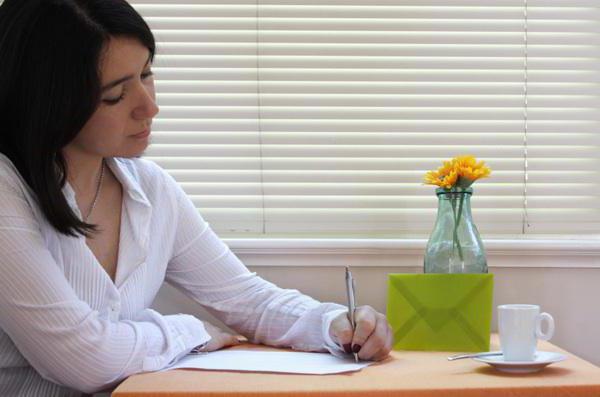Each of us wrote formal letters and notes at least several times in our lives. Wherever we are and whatever we do, our business correspondence takes place in any field, which must be conducted in order to find out some points, clarify information, ask a question, and so on. If earlier this phenomenon was more common in paper applications and in sending letters to superiors (as well as business partners), today this category has spread more widely in our environment.
You need to know how to properly conduct business correspondence, even if you just make an order in some online store and want to communicate with its representative.
In this article, we describe some of the main points that make up business communication. We will pay attention to what nuances should be taken into account when exchanging letters with our partners; what can not be neglected if you do not want to appear to the interlocutor incompetent and impolite, and also remember the rules that should be observed in any situation.
Where applicable

Obviously, business correspondence is most often used in the work process. If you work in a company, then you will definitely encounter the need to compose this type of correspondence. Since we are talking about business issues, it is easy to understand that the writing style should be appropriate - as formalized and official as possible.
The further impression of the company’s employees, where the letter is sent, about you and your company depends on how well you manage to establish business correspondence. Therefore, the process of writing the text and its design should be approached as responsibly as possible.
First of all, if you are looking for business correspondence, we recommend that you familiarize yourself with our instructions. In it, as already noted above, we will present some theoretical points as well as practical issues. At the end of the article we will try to give some examples of turns that are typical of the formal style of writing. In the end, using the base from this article, you can independently create high-quality texts for further communication with contractors.
Types of correspondence

Immediately, discussing what business correspondence is, I would like to draw attention to its types. So, you can select a request letter and, accordingly, response letter; letter informational nature (most often sent to the client); a thank-you note (in gratitude for the provided service), a notification letter, a reminder, a warning; letter of recommendation; guarantee and cover letter. In fact, these are just the most commonly used types that make up both real and electronic business correspondence. Therefore, with them we will meet in practice more often.
Structure
It is logical that for a more convenient organization in writing any letter, it would be useful for us to work with its certain structure or plan. This will allow you to break the task into smaller stages, which are much easier to complete. For example, think over the line of your letter in such a way as to cover the topics that you need to state as accurately as possible. For example, if you are writing a question about what price this or that product has, try to briefly state the motive: why are you writing to the company (because you want to purchase or order this or that product); clarify the main goal (to find out how much it will cost you to order 10 units of goods with certain options).Finally, specify in what form you would like to receive the calculation, and ask if a discount is made on such a volume of production.

Of course, this information is already obvious - you just need to logically analyze what you want to write. In addition, we must not forget about the design and requirements. We will tell you more about this later.
Writing requirements
So, the rules of business correspondence say that all letters should be, firstly, short. This is the main rule that it will be read. Agree, we all do not like when we are loaded with a large amount of information. If this letter is of a business nature, it should not be huge - in this case it can simply be ignored. If you can’t reduce the information immediately, do it after you write the first draft of your letter.
Secondly, your partner (correspondence participant) must understand what is at stake. That is, the letter should be made informative and understandable. It is necessary to put in it the information that you would like to convey in such a way as to avoid additional questions and not to waste time on clarifying details.
Thirdly, the letter should be made as respectful as possible towards your partner or company employee who will read it. It is true - the more respect you show to your interlocutor, the more chances are that he will properly respond to your request and, in the end, you will achieve the desired effect.
Correspondence in English

In some cases, negotiations should be in English (or any other than Russian) language. This is normal, especially if there is a relationship with foreign counterparties. It is noteworthy that the rules of business correspondence apply to any language: only stylistic turns may differ. Your task is to choose the most suitable for the situation in which you and your partner (interlocutor) are.
Business correspondence in English, of course, requires knowledge of it at a sufficiently high level, so if this is not about you, we recommend that you contact professional translators. It is important that the translation is carried out by a person who owns specialized speech, which is included in the language of business correspondence.
Example. Introduction
In any conversation, how you start it is very important. In this plan business etiquette Correspondence is no different from live communication: the first thing is to greet the interlocutor and somehow introduce him into the conversation. The greeting may be the standard “Hello”, but the introduction should be more individual. For example, you can indicate the brief purpose of your letter (“We are contacting you in order to clarify some information about your product. First of all, we are interested in the cost of the A1 model). Another option: “As a continuation of our telephone conversation about the A1 model, I am writing to you with a question about the cost of this product”). You can also simply describe your situation: “I am writing to you for the reason that in 2010 your partner contacted our company, offering you to start cooperation in this area on your behalf."

Statement of material
Further, after you wrote some introduction in your letter, you should make a clarification as to why you are writing. For example, after asking a question about the price of a product, specify what interests you. You can write this: "We would like to order the N-th number of units of products subject to delivery to the address X." In the case of the continuation of the telephone conversation, you can state your request - why did you write to the person after you spoke with him on the phone (say, to confirm your intention to complete the transaction): "Namely: we are interested in product N, provided that it will be delivered with option X ". If you take into account the third version, you can also begin to develop the theme of your desire to cooperate with the company.Describe that it is in your interests and that the partner will receive any concrete benefit from interacting with you if he agrees to it: "You will be interested to know that the course of our company has changed, after which it has become even closer to the interests of your business."
Sentence
Any business correspondence (the examples we cite also necessarily have this property) requires a logical sequence. If at first you wrote about why you are writing, then you should further elaborate and expand this idea. Indicate what you would like from the interlocutor more broadly - perhaps draw him a prospect of the benefits of agreeing to work with you. This part, by all logic, should be the “peak” of your letter, the culmination of a kind. If initially you smoothly approached what interests you first of all, then in this part you should “reveal the cards”. All business correspondence (examples of letters above is no exception) should be built on such a smooth curve going up. Then the reader of your lines will understand your mood and, thus, it will be more comfortable for him to communicate with you. Do not make any steep jumps, do not switch from one topic to another.
As the examples show, if you need to discuss, for example, two unrelated issues, you can make a division into parts of the article, breaking it into paragraphs. This is convenient for the reader, who will visually see the moment where you are moving from one question to another; so is it for you, because in this case you write as if we are talking about two different letters.
If we talk about our examples, you should write: "In addition, we would like to re-order products N, about which we interacted a month earlier." Or: "At a price suitable for our conditions, we would like to establish permanent cooperation with you in this area, increasing the sales channel to X-Y thousand units." Finally, you can: “If your interest in working with us is still valid, please let us know.”

Every second sample of business correspondence is built on this principle, so there is nothing wrong with that. On the contrary, often highlighting headings helps to navigate better, because it removes “solid text”, makes a kind of “anchor” in it, to which you can attach visually.
Final part
Finally, you should end the letter in the same manner in which you started it. If you write thanks, write that you are pleased to cooperate with the company you are describing; if this is a commercial offer, you should express gratitude for the attention to your letter and hope for further interaction with this person. You need to understand that how you finish your letter largely determines the final opinion about you and your company. All business correspondence (examples of letters constantly prove this) is based on courtesy - so always remember to thank your interlocutor, express hope, praise him or leave your recommendation. You should choose the ending for your text in such a way as to fully correspond to the problem described in the letter.
Examples: "We hope to keep you as our constant partner with the hope of stable cooperation in our future activities." Or "We are sincerely grateful for your attention and hope that we can develop cooperation with you in the future." Or "Thank you for your attention. I hope we can continue to ensure your interests in the N market in the future."
Etiquette and Literacy
In no case do not forget about courtesy. As already mentioned above, it is important if you are interested in business correspondence. Phrases such as “glad to cooperate,” “thank you for your attention,” “I apologize for your concern,” “we will be glad to see you,” “will you not make us a company,” and others. The latter two, by the way, relate more to invitations to corporate celebrations than to business writing.
Always, as a sign of respect, add to the phrases “please,” “thank you,” “kindly,” and so on, where appropriate.

Equally important in the process of writing business letters is human literacy. More precisely, if you make at least one elementary mistake in the process of creating a letter, we can say that the interlocutor will form a completely different opinion about you than what you expect. Therefore, try to write as competently as possible and check everything several times. If you do not know how to find errors and fix them yourself, use the services of a corrector or specialized services. It is very simple, but it allows you to be confident in your text.
Practice and training
In the network, as noted above, there are many examples of ready-made business letters on any subject. We did not insert them here as a whole, because, in fact, this article simply does not have enough space to accommodate such a large amount of information. In exchange, we decided to simply state some basic rules and principles, which you had the opportunity to familiarize yourself with above. However, this, of course, is far from all the steps that should be taken on the path to studying business writing. In fact, the practical role plays the most important role in this area.
If you study, say, 5-10 examples of ready-made letters, and also read our article and extract some rules from here, very soon you will be able to write letters in the way you need. In fact, this is enough to create any letter in the framework of business correspondence.
Ready examples
Since, as already noted above, there is a huge number of ready-made examples, it is tempting for students and novice specialists to use someone else’s, ready-made know-how in order to make their own project on its basis. I want to say that this is not recommended in practice, while in training - please.
In the process of studying what is written in other letters, you can more easily navigate what you need to clarify in your correspondence. This is normal, since it is human nature to learn directly from experience.
True, if you are given the task of compiling a full-fledged business letter, try first to review the examples and choose the most suitable for your task. Then you need to adapt it as much as possible to the situation that you developed according to the general concept, but at the same time write it again in order to establish your own style of presentation and writing. After all, perhaps you will be able to convey the information better, and make the communication more productive and efficient.
Learn and practice! And you can create your own business letters in a fairly short period of time!








